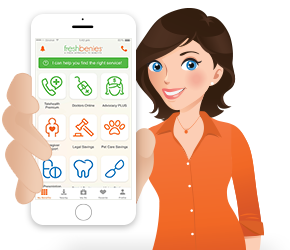"BARKING DOGS"--- PAINFUL CONDITIONS AFFECTING THE FEET
This is a guest post by Dr. Val Jones who works with our Doctors Online partners at eDocAmerica.
It's no surprise that foot problems are common when you recognize that your feet bear the entire weight of the body with each step. Congenital abnormalities, altered foot mechanics, excessive activity, and inappropriate footwear are responsible for most problems affecting the feet, such as:
- Bunions
- Morton's neuroma
- Hammer toe
- Fallen arches, also known as flat feet or pes planus
- Plantar fasciitis
A bunion affects the joint between the foot and the big toe, known as the first metatarsophalangeal (MTP) joint). Bony degeneration along with irritation of a "cushion" known as a bursa on the inside (medial aspect) of the joint, contribute to the discomfort associated with bunions. Bunions are often associated with a structural abnormality called hallux valgus in which the big toe is angled toward the other toes. Wearing footwear that is too tight, squeezing the toes together, is one factor thought to be responsible for causing hallux valgus and bunions. This is not the case in every instance, however, since bunions also develop in primitive cultures in which shoes are not worn. Bunions tend to run in families, perhaps due to inherited faulty foot mechanics.
A number of non-surgical measures can help with bunion symptoms. The single most important measure is to remove pressure on the bunion by wearing shoes of appropriate width. Shoes with pointed toes or high heels should be avoided. In some cases, shoes can be stretched over the area of the bunion to reduce pressure. Pads made from felt, gel or foam are also available to cushion the bunion from the side of the shoe. Some people may also benefit from the use of specially designed splints. If the deformity or pain becomes severe, surgery to realign the toe and remove the bony bump (bunionectomy) may be necessary.
Morton's neuroma is a common cause for pain in the forefoot. A neuroma is a thickening of the tissue that surrounds the nerve in response to irritation, trauma, or excessive pressure. The most common location for a Morton's neuroma is between the 3rd and 4th toes. The primary symptoms are burning pain in the ball of the foot and/or numbness of the toes that are supplied by the involved nerve. The symptoms are typically worse with activity or when wearing constricting shoes.
The initial treatment is almost always non-surgical. Some combination of the following measures may take care of the problem:
- A change in footwear toward wider shoes with lower heels and a cushioned sole.
- Anti-inflammatory medications. Oral medications such as ibuprofen are tried first, but on occasion, a cortisone injection may be required.
- Special shoe inserts such as a metatarsal pad or arch support.
If conservative measures prove unsuccessful, surgery to remove a portion of the nerve or release the tissue around the nerve can provide relief.
Hammer toe is a deformity of the toe in which the end of the toe is bent downward, assuming a claw-like position. Hammer toe most commonly affects the second toe, although it can also affect the other toes. A corn on the top of a toe and a callus on the sole of the foot may develop, which makes walking painful. The condition may be congenital (present at birth), acquired by wearing short, narrow shoes or secondary to the development of hallux valgus (bunion). Properly-sized footwear or wide toe-box shoes usually provide comfort and can reduce aggravation of hammer toes. Mild hammer toe can also be treated with special splints. Severe hammer toe requires an operation to straighten the joint. The surgery usually involves cutting or transferring tendons or fusing the joints of the toe together.
A flat foot, also known as pes planus, is a condition where the arch or instep of the foot collapses during walking or running. This "fallen arch" can result from a number of causes including laxity of a tendon in the ankle (posterior tibial tendon), a complication of diabetes (Charcot foot), arthritis and injury. When painful, most people will benefit from the use of arch supports. In some cases, custom-made arch supports called orthotics may be even more beneficial. People with flat feet, low arches, or overly flexible arches tend to overpronate which means that their foot rolls too far inward. Overpronation is a common cause of foot pain, particularly in runners. Most running shoe stores carry shoes for flat or overpronated feet that provide extra support on the inside (medial aspect) of the shoe. This type of shoe can even help non-athletes with pain associated with flat feet. Only rarely does surgical correction to improve alignment of flat feet become necessary.
Many people who think that they have a "stone bruise" beneath the heel actually have a problem known as plantar fasciitis. The plantar fascia is a very thick band of tissue that extends from the bottom of the heel toward the toes, forming part of the arch of the foot. Should the plantar fascia become inflamed, pain develops on the bottom of the heel. The most common symptom of plantar fasciitis is heel pain that occurs when taking the first few steps in the morning or after sitting for a period of time. Risk factors for its development include problems with the arch of the foot (either flat feet or high arches), obesity, sudden weight gain, running, and a tight Achilles tendon. Initial treatment usually consists of heel stretching exercises, shoe inserts, night splints, and anti-inflammatory medications. Occasionally, a steroid injection will provide lasting relief of symptoms. In a very few, non-surgical treatment fails and surgery to release the tight, inflamed fascia may be considered.
















